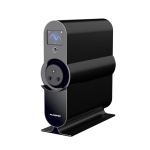Deep profiling of plasmalogens by coupling the Paternò–Büchi derivatization with tandem mass spectrometry
Plasmalogens are a special class of glycerophospholipids characterized by a vinyl ether bond (-C = C-O-) at the sn-1 position of the glycerol backbone. Altered plasmalogen profiles have been observed in neurodegenerative diseases and cancers. Profiling of plasmalogens requires specifying the vinyl ether bond and differentiating them from various types of isobars and isomers. Herein, by coupling C = C derivatization via offline Paternò–Büchi reaction with liquid chromatography-tandem mass spectrometry, we have developed a sensitive workflow for analysis of plasmalogens from biological samples. Using bovine heart lipid extract as a model system, we profiled more than 100 distinct structures of plasmenylethanolamines (PE-Ps) and plasmenylcholines (PC-Ps) at the C = C location level, far exceeding previous reports. Analysis of human glioma and normal brain tissue samples revealed elevated n-10 C = C isomers of PE-Ps in the glioma tissue samples. These findings suggest that the developed workflow holds potential in aiding the study of altered metabolism of plasmalogens in clinical samples.
- This study develops a workflow combining off-line 2′,4′,6′-trifluoroacetophenone (triFAP)-based C=C derivatization with hydrophilic interaction chromatography-tandem mass spectrometry (HILIC-MS/MS) to resolve plasmalogen structures at both the chain composition and C=C position levels.
- The workflow identifies 73 plasmenylethanolamines (PE-Ps) and 31 plasmenylcholines (PC-Ps) species with defined C=C locations from bovine heart lipids.
- Profiling of glioma tissue reveals an increased n-10 isomers in PE-Ps compared to normal brains, highlighting the potential in studying the altered plasmalogen metabolism in clinical samples.
Anal Bioanal Chem. 2024 Aug;416(19):4397-4407. (IF: 3.8)


